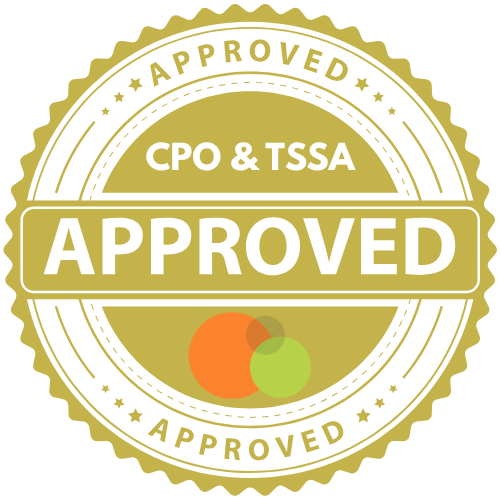Joint Health and Safety Committee Certification Part Two
In Person

Overview
Under section 9 of the Occupational Health and Safety Act (OHSA), where a workplace has twenty (20) or more workers, a Joint Health and Safety Committee must be established. All Joint Health and Safety Committees are required to have two of their members, one worker and one manager, certified by a Chief Prevention Officer (CPO) approved training provider.
To become a fully certified JHSC member, you must initially complete two CPO approved Joint Health and Safety Committee programs; Part One and Part Two, which is workplace specific.
- Joint Health and Safety Committee Part One training will be three days in length (19.5 hours)
- Joint Health and Safety Committee Part Two training will be two days in length (13 hours)
Your Joint Health and Safety Committee Part Two training is geared towards understanding the R.A.C.E. methodology further and how to apply to hazards that are specific to your workplace.
Your Joint Health and Safety Committee Part Two certification is intended to provide a review of what was covered in the part one, and to then discuss a minimum of six hazard topics that relate to your industry.
Once you have completed the JHSC Part One training, you must complete your JHSC Part Two training within 12 months in order to become a fully certified member.
The goal of this Joint Health and Safety Committee Part Two certification program is to ensure that participants can apply and understand:
- The concept of hazard recognition and its various methods.
- How to properly assess a hazard for its risk and compliance.
- The various controls that can be employed to decrease or eliminate risk.
- The importance of evaluating current controls.
- Understanding how to apply the above to hazards that are present in your workplace.
- Practice these methods as they relate to various hazard categories.
- Drafting recommendations for controls to the employer.
What You’ll Learn
- Describe key concepts of Part One training including the process of how to recognize, assess and control hazards, and evaluate the hazard controls.
- Review key concepts of Part One training including hazard recognition, assessment, and control methods, and evaluation of the hazard controls.
- Review the provincial hazard priorities and practice applying a hazard management tool to these priorities.
- Apply recognition, assessment, control, and evaluation principles to each of the workplace hazard(s) selected for the training program.
- Describe the hazard and how it may cause injury or illness.
- Identify the relevant legislation, standards, and guidelines for the hazard.
- Describe how to recognize and assess the hazard.
- Describe ways of controlling the hazard.
- Describe ways of evaluating the hazard control(s).
- Using an actual workplace scenario, practice completing a Hazard Management Tool.
- Create a draft action plan and recommendations for the employer on at least one hazard in Learning Outcome #2.
- Using an actual workplace scenario, prepare an action plan to control at least one hazard.
- Prepare sample recommendations to the employer.
FAQ
How is this program taught?
This program is taught using an interactive discussion method. This means that all participants will be involved in discussing the content throughout the duration of the program. This method ensures that all participants receive and understand the information.
Are there accommodations for learning disabilities?
Participants that may have a learning disability or other impairment, such as language, literacy hearing, or vision, will be accommodated. This may involve having the questions read to the participant(s) by the instructor, the assistance of an interpreter supplied by the employer, or other means. Where disabilities or impairments are identified, please advise your contact when scheduling the course so all efforts to accommodate can be made.
How long is the certificate valid for?
To be a valid certificate, JHSC Part Two Certification must be completed within 12 months of the JHSC Part One Certification. Once Part One and Two are successfully completed, the certification is valid for three years.

Details
Course Length
approximately 16 hours (2 days)
Breaks
Two 15-minute breaks, one 30-minute lunch each day
Location
Private onsite or in public setting at STC facilities in the Simcoe-Muskoka region
Requirements
Photo ID, completion of course registration form including email address, phone number, year of birth used to register workers into SkillsPass™
Prerequisites
- Successful completion of JHSC Part One Certification from a CPO Approved Training Provider.
Free Download